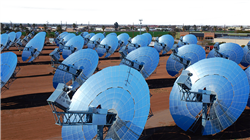University certificate
The world's largest faculty of engineering”
Introduction to the Program
Through this Postgraduate diploma, based on Relearning, you will efficiently select all the components of photovoltaic systems"

With growing concerns about climate change and the need to reduce dependence on fossil fuels, solar PV has become a key option for sustainable electricity generation. In this regard, engineers play a critical role in designing PV systems that are not only efficient and cost-effective, but also safe. For this reason, it is essential that these experts have a detailed overview of the PV system design process, ranging from site assessment or component selection to power system planning and integration with existing infrastructure.
In this context, TECH has created a pioneering and revolutionary Postgraduate diploma in Photovoltaic Installation Design. The academic itinerary will analyze the construction of large photovoltaic plants taking into account factors such as climate data, sizing of wiring or production parameters. The syllabus will also delve into the sizing of off-grid PV systems, including site selection, component selection and its corresponding coupling. At the same time, the program will provide students with state-of-the-art alarm issuing strategies. In this way, graduates will continuously monitor systems to correct problems before they significantly affect performance.
Because this program is developed through a 100% online methodology, engineers will have the opportunity to expand their learning without having to attend to cumbersome pre-established study schedules. In addition, TECH uses its ground-breaking method of Relearning, based on the repetition of key concepts of to correctly. In this way, professionals will enjoy a totally natural and progressive learning experience. All students will need is an electronic device with an Internet connection (such as a cell phone, computer or tablet) to log on to the Virtual Campus and embark on a high-intensity experience that will improve their career prospects considerably.
Handle surplus management at the world's best online university according to Forbes"
This Postgraduate diploma in Photovoltaic Installation Design contains the most complete and up-to-date scientific program on the market. The most important features include:
- The development of practical cases presented by experts in Photovoltaic Installation Design
- The graphic, schematic, and practical contents with which they are created, provide practical information on the disciplines that are essential for professional practice
- Practical exercises where self-assessment can be used to improve learning
- Its special emphasis on innovative methodologies
- Theoretical lessons, questions to the expert, debate forums on controversial topics, and individual reflection assignments
- Content that is accessible from any fixed or portable device with an Internet connection
You will delve into the safety of photovoltaic plants and ensure both worker protection and regulatory compliance"
The program’s teaching staff includes professionals from the sector who contribute their work experience to this program, as well as renowned specialists from leading societies and prestigious universities.
The multimedia content, developed with the latest educational technology, will provide the professional with situated and contextual learning, i.e., a simulated environment that will provide immersive education programmed to prepare for real situations.
This program is designed around Problem-Based Learning, whereby the professional must try to solve the different professional practice situations that arise during the course. For this purpose, the students will be assisted by an innovative interactive video system created by renowned and experienced experts.
Do you want to incorporate state-of-the-art sizing optimization strategies into your daily practice? Achieve it with this program in only 540 hours"

You will reach your academic goals quickly, without the need to travel to a study center thanks to TECH's 100% online methodology"
Why study at TECH?
TECH is the world’s largest online university. With an impressive catalog of more than 14,000 university programs available in 11 languages, it is positioned as a leader in employability, with a 99% job placement rate. In addition, it relies on an enormous faculty of more than 6,000 professors of the highest international renown.

Study at the world's largest online university and guarantee your professional success. The future starts at TECH”
The world’s best online university according to FORBES
The prestigious Forbes magazine, specialized in business and finance, has highlighted TECH as “the world's best online university” This is what they have recently stated in an article in their digital edition in which they echo the success story of this institution, “thanks to the academic offer it provides, the selection of its teaching staff, and an innovative learning method aimed at educating the professionals of the future”
A revolutionary study method, a cutting-edge faculty and a practical focus: the key to TECH's success.
The most complete study plans on the university scene
TECH offers the most complete study plans on the university scene, with syllabuses that cover fundamental concepts and, at the same time, the main scientific advances in their specific scientific areas. In addition, these programs are continuously being updated to guarantee students the academic vanguard and the most in-demand professional skills. In this way, the university's qualifications provide its graduates with a significant advantage to propel their careers to success.
TECH offers the most comprehensive and intensive study plans on the current university scene.
A world-class teaching staff
TECH's teaching staff is made up of more than 6,000 professors with the highest international recognition. Professors, researchers and top executives of multinational companies, including Isaiah Covington, performance coach of the Boston Celtics; Magda Romanska, principal investigator at Harvard MetaLAB; Ignacio Wistumba, chairman of the department of translational molecular pathology at MD Anderson Cancer Center; and D.W. Pine, creative director of TIME magazine, among others.
Internationally renowned experts, specialized in different branches of Health, Technology, Communication and Business, form part of the TECH faculty.
A unique learning method
TECH is the first university to use Relearning in all its programs. It is the best online learning methodology, accredited with international teaching quality certifications, provided by prestigious educational agencies. In addition, this disruptive educational model is complemented with the “Case Method”, thereby setting up a unique online teaching strategy. Innovative teaching resources are also implemented, including detailed videos, infographics and interactive summaries.
TECH combines Relearning and the Case Method in all its university programs to guarantee excellent theoretical and practical learning, studying whenever and wherever you want.
The world's largest online university
TECH is the world’s largest online university. We are the largest educational institution, with the best and widest online educational catalog, one hundred percent online and covering the vast majority of areas of knowledge. We offer a large selection of our own degrees and accredited online undergraduate and postgraduate degrees. In total, more than 14,000 university degrees, in eleven different languages, make us the largest educational largest in the world.
TECH has the world's most extensive catalog of academic and official programs, available in more than 11 languages.
Google Premier Partner
The American technology giant has awarded TECH the Google Google Premier Partner badge. This award, which is only available to 3% of the world's companies, highlights the efficient, flexible and tailored experience that this university provides to students. The recognition as a Google Premier Partner not only accredits the maximum rigor, performance and investment in TECH's digital infrastructures, but also places this university as one of the world's leading technology companies.
Google has positioned TECH in the top 3% of the world's most important technology companies by awarding it its Google Premier Partner badge.
The official online university of the NBA
TECH is the official online university of the NBA. Thanks to our agreement with the biggest league in basketball, we offer our students exclusive university programs, as well as a wide variety of educational resources focused on the business of the league and other areas of the sports industry. Each program is made up of a uniquely designed syllabus and features exceptional guest hosts: professionals with a distinguished sports background who will offer their expertise on the most relevant topics.
TECH has been selected by the NBA, the world's top basketball league, as its official online university.
The top-rated university by its students
Students have positioned TECH as the world's top-rated university on the main review websites, with a highest rating of 4.9 out of 5, obtained from more than 1,000 reviews. These results consolidate TECH as the benchmark university institution at an international level, reflecting the excellence and positive impact of its educational model.” reflecting the excellence and positive impact of its educational model.”
TECH is the world’s top-rated university by its students.
Leaders in employability
TECH has managed to become the leading university in employability. 99% of its students obtain jobs in the academic field they have studied, within one year of completing any of the university's programs. A similar number achieve immediate career enhancement. All this thanks to a study methodology that bases its effectiveness on the acquisition of practical skills, which are absolutely necessary for professional development.
99% of TECH graduates find a job within a year of completing their studies.
Postgraduate Diploma in Photovoltaic Installation Design
This Postgraduate Diploma in Photovoltaic Installation Design developed by TECH Global University offers specialized and advanced education to address the world of solar energy and the practical applications of this technology. This program, taught 100% online, will provide you with the skills and knowledge necessary to design, plan and implement efficient and sustainable photovoltaic systems, contributing to the transition to a cleaner energy future. Here, you will explore the fundamentals of solar PV, starting with a solid understanding of semiconductor physics and solar cell operation. As you progress, you'll be introduced to the various PV technologies available, including monocrystalline, polycrystalline and thin-film modules. This technical knowledge is essential for selecting the right components and optimizing the performance of photovoltaic installations. You will also address the design and sizing of photovoltaic systems. You will learn how to use specialized software and simulation tools to create accurate designs that maximize solar energy collection. Finally, you will address crucial aspects such as panel orientation and tilt, shading and module interconnection, ensuring that designs are both efficient and feasible in practical terms.
Become a specialist in the design of photovoltaic installations
La modalidad online del curso ofrece una flexibilidad invaluable, que te permitirá acceder a los materiales de estudio desde cualquier lugar y a cualquier hora, fomentando un aprendizaje autodirigido que se adapta a tus horarios y compromisos diarios. Un componente clave del curso es la planificación y gestión de proyectos fotovoltaicos. Adquirirás habilidades en la evaluación de recursos solares, análisis de viabilidad económica y estrategias de financiación, permitiéndote desarrollar proyectos que no solo sean técnicamente sólidos, sino también rentables y sostenibles. Esta capacitación integral te prepara para enfrentar los desafíos asociados con la implementación de sistemas fotovoltaicos en una variedad de contextos, desde instalaciones residenciales, hasta grandes parques solares. Al finalizar, estarás preparado para asumir roles especializados en el sector de la energía solar. Podrás trabajar en empresas de ingeniería, consultorías energéticas, organizaciones gubernamentales y ONG, contribuyendo al diseño y desarrollo de proyectos solares innovadores y sostenibles. ¡Inscríbete ya y da un paso decisivo hacia una carrera en el sector de las energías renovables! Podrás contribuir al desarrollo de un futuro energético más sostenible.







